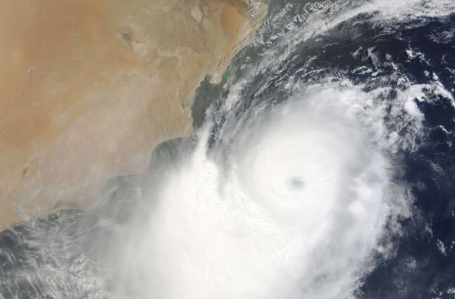* The eastern half of Minnesota is still too dry, nearly 19% of the state still in a moderate drought (including far northeastern suburbs of the Twin Cities).
* White-knuckle Friday AM commute - most of the rain should be over by 9 am.
* Partly-showery weekend. Tracking the best times for outdoor activities.
* May recap from the MN State Climatology Office here.
* What the heck is a "noctilucent cloud" and why should I care?
* Tracking the oil spill - new tools from NOAA.
* Why setting off a nuke on the bottom of the Gulf of Mexico (to plug up the runaway oil leak) might be a very bad idea.
* Hurricane season kicked off June 1. What you need to know if you're ever in the path of a hurricane.

Paul's Conservation MN Outlook for the Twin Cities and all of Minnesota
Today: Wet start, rain tapers early, skies brighten by midday with afternoon sunshine. Winds: W 10-20. High: near 80
Friday night: Clear to partly cloudy. Low: 59
Saturday: Sunny morning, clouds increase during the afternoon with a shower or T-shower. Winds: W 10-20+ High: 75
Sunday: Blue sky early, then patchy PM clouds, shower or thundershower (more numerous up north). Winds: NW 10-20. High: 74
Monday: More clouds than sun, isolated shower. High: 73
Tuesday: Unsettled with an isolated shower or T-shower. High: 72
Wednesday: Partly sunny and drier. High: 75
Thursday: Plenty of sunshine, warming up. High: 78
Welcome to the second warmest spring in modern-day weather records, dating back to 1874. According to Pete Boulay at the MN State Climatology Office, we missed an all-time record by a scant .3 F. It was also the second warmest spring (March-April-May) in Eau Claire, the third warmest spring in St. Cloud. A spring of superlatives, unusually mild, sunny days, and a dearth of severe weather. We still haven't seen a confirmed tornado anywhere in the state in 2010, although last year the first twister didn't touch down until June 17. There have been a few hail reports, some minor wind damage, but it's safe to say we've gotten off pretty easy in the severe weather department so far. The reason? For most of spring the main storm track was stuck in a rut, blowing moist Pacific storms across the central and southern Plains to the east coast, a persistent bubble of high pressure loitering over the Great Lakes producing a string of unusually mild, dry, sun-splattered days. No complaints - the weather has been nothing short of extraordinary.
Last night's surge of rain will probably make for a painful morning commute, expect skies to dry out and brighten up by midday with enough afternoon sun for upper 70s to near 80. If you have outdoor plans for the afternoon or evening hours you should be just fine - no worries (famous last words). The weekend? Not quite as nice as last weekend, a solid B- on my lopsided grading curve. There WILL be sunshine, mainly morning hours Saturday and Sunday, but a lingering swirl of unusually cold air aloft will leave the atmosphere floating over Minnesota unstable, capable of building afternoon clouds - thick enough cloud cover to leak showers, even a few embedded thundershowers. I don't expect anything severe, but with a relatively low freezing level I could see some marble size hail with a few of these late afternoon T-storms both days. A few random showers linger into Monday and Tuesday, the latter half of next week looks drier, sunnier and warmer as temperatures mellow through the 70s to near 80. No sizzling heat, no rancid humidity levels, no weather "new" anytime soon. Our remarkably quiet spring drags on.
No complaints here...it's all good. Nagging Dry Rut. The eastern half of Minnesota is still too dry, nearly 19% of the state in a moderate drought, from parts of Washington and Chicago counties north to the Iron Range. An estimated 3.8% of Minnesota (far eastern tip of the Arrowhead) is in the midst of a severe drought. Click here to see the Drought Monitor (click on Minnesota to zoom in for local details).
Nagging Dry Rut. The eastern half of Minnesota is still too dry, nearly 19% of the state in a moderate drought, from parts of Washington and Chicago counties north to the Iron Range. An estimated 3.8% of Minnesota (far eastern tip of the Arrowhead) is in the midst of a severe drought. Click here to see the Drought Monitor (click on Minnesota to zoom in for local details).

Cyclone Phet. The second strongest hurricane to ever form in the Arabian Sea, Phet produced 26 foot waves and winds over 170 mph - threatening coastal Oman, and eventually Pakistan. Water temperatures in the Arabian Sea were in the mid to upper 80s, fueling this unusually powerful storm. The latest on Phet, and where it may be headed here. The BBC has a recap on Phet here. Waterspout! Check out the amazing waterspout (a tornado forming over water) that came ashore near Byron Bay, Australia, triggering considerable destruction. See a series of amazing photos below.
Waterspout! Check out the amazing waterspout (a tornado forming over water) that came ashore near Byron Bay, Australia, triggering considerable destruction. See a series of amazing photos below.


 Australian Waterspout (continued). A typical waterspout produces winds of 60-85 mph, strong enough to flip boats. Rarely do they come ashore, but residents of Byron Bay, Australia are picking up the pieces after a fluke waterspout swept inland as a tornado, triggering extensive damage. Click here to see video of the disaster. More photos here. How good is your Dutch?
Australian Waterspout (continued). A typical waterspout produces winds of 60-85 mph, strong enough to flip boats. Rarely do they come ashore, but residents of Byron Bay, Australia are picking up the pieces after a fluke waterspout swept inland as a tornado, triggering extensive damage. Click here to see video of the disaster. More photos here. How good is your Dutch? The Spill in Pictures. It's pretty easy to become detached from the unprecedented oil spill in the Gulf of Mexico, reduce it to statistics about a faraway place. That changes when you look at the some of these aftermath photos. If this slow-motion ecological disaster continues through August I can't even imagine the impact on the Gulf and surrounding states. Shepard Smith from Fox New had a few choice words for BP and its executives here. To make matters worse, BP may have withheld video showing the true scope of the spill - the story is here.
The Spill in Pictures. It's pretty easy to become detached from the unprecedented oil spill in the Gulf of Mexico, reduce it to statistics about a faraway place. That changes when you look at the some of these aftermath photos. If this slow-motion ecological disaster continues through August I can't even imagine the impact on the Gulf and surrounding states. Shepard Smith from Fox New had a few choice words for BP and its executives here. To make matters worse, BP may have withheld video showing the true scope of the spill - the story is here. Interactive Tracking. NOAA has put together a superb site that allows you to see the advance of the spill, layer in YouTube videos and social media to help tell the story - impact on fishing - even predictions on where the spill is heading next.
Interactive Tracking. NOAA has put together a superb site that allows you to see the advance of the spill, layer in YouTube videos and social media to help tell the story - impact on fishing - even predictions on where the spill is heading next. Hurricane-Ready? Granted, it's one of the few things Minnesotans don't have to worry about, along with earthquakes, volcanoes and tidal waves. But the next time you're vacationing, on a business trip or visiting family on the coast and a hurricane approaches, you may want to know all the facts outlined in this story.
Hurricane-Ready? Granted, it's one of the few things Minnesotans don't have to worry about, along with earthquakes, volcanoes and tidal waves. But the next time you're vacationing, on a business trip or visiting family on the coast and a hurricane approaches, you may want to know all the facts outlined in this story. Noctilucent Clouds. Extremely rare, these high-altitude clouds have become more visible in recent years - some researchers think there's a link to climate change and warming of the atmosphere. I don't pretend to know. More on these freakish clouds in a story at spaceweather.com.
Noctilucent Clouds. Extremely rare, these high-altitude clouds have become more visible in recent years - some researchers think there's a link to climate change and warming of the atmosphere. I don't pretend to know. More on these freakish clouds in a story at spaceweather.com.
No comments:
Post a Comment